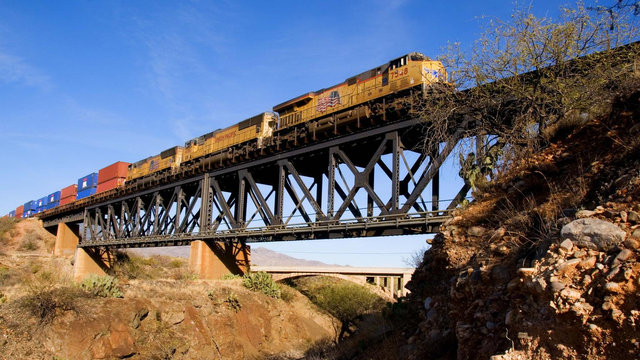
January 4, 2022
Self-Financed Freight Rail Will Still Enjoy Infrastructure Law Benefits

Railroads are unique among other modes of transportation when it comes to infrastructure. They don’t rely on the government to fund the maintenance and expansion of their infrastructure, which includes all structures, buildings, land, and the equipment needed to run a railroad. Railroads pay for their own infrastructure improvements and always have -- as an industry to the tune of more than $25 billion per year.
But that doesn’t mean railroads won’t see benefits from the infrastructure bill. Here are just a few examples.
- For the first time ever, Congress created a $3 billion program dedicated to eliminating grade crossings and making existing crossings safer. The communities where we operate rely on these resources to improve safety and quality of life, and this significant increase will make a meaningful impact.
- The infrastructure bill provides an average of $5.55 billion per year for infrastructure grant programs that support multimodal freight projects that will relieve freight bottlenecks, improve connectivity and fund industrial development projects that can connect freight rail to new markets and more communities. These projects include public-private partnerships in which railroads also contribute private funding commensurate with the benefits they receive.
- In support of our Environmental, Social and Governance (ESG) goals, the bill creates several programs that bolster alternative fuel research and development, and deployment of lower emissions locomotives. This no doubt will help Union Pacific follow through on actions outlined in our 2021 Climate Action Plan, including achieving net zero emissions by 2050.
While freight railroads almost exclusively self-fund their infrastructure, some of our competitors operate on publicly financed highways. A 2000 U.S. Department of Transportation (DOT) Highway Cost Allocation study found that 80,000-pound trucks currently cover costs associated with 80 percent of the damage they cause, with proposed heavier trucks covering only 50 percent of the costs. These numbers have no doubt worsened as Congress has subsidized the Highway Trust Fund with general fund dollars to the tune of nearly $150 billion since 2008.
The infrastructure law sets in motion an update to that 2000 study that will show the true subsidies our competitors in the trucking sector enjoy. Railroads believe lawmakers should restore the “user pays” principle and ensure trucking companies pay the full cost of the infrastructure they use, just like we do. We are eager to compete, but it must be on a level playing field.
Perhaps most importantly is what was not in the bill. Unlike early drafts, there were no operational restrictions or unachievable mandates that would have impeded our ability to compete in the market and make the investments necessary to run the safest and most efficient railroad in North America.